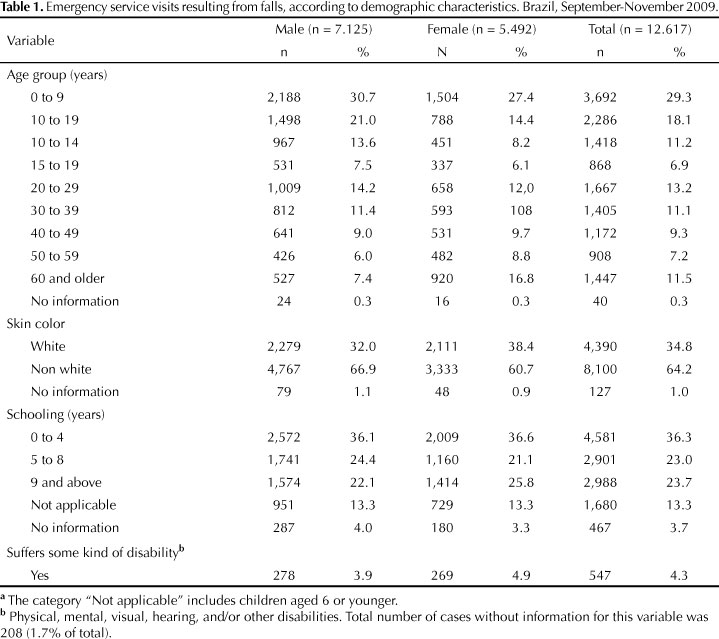OBJECTIVE: To analyze the characteristics of visits to the emergency services that result from falls and to identify the factors associated with these visits. METHOD: A cross-sectional study of 12,617 visits that resulted from falls, recorded in the National Injury Surveillance System, was carried out. The data were collected in 23 Brazilian capitals and the Federal District between September and November 2009 using cluster sampling. Correspondence analysis was used, which allowed for the joint observation of a large number of qualitative variables. RESULTS: Most of the victims were male (56.5%), aged 0 to 19 years (45.7%), and identified as non-white skin color (62.2%). The majority of the falls occurred at home (54.6%) and in the street (17.4%); 14.3% were work-related. The predominant types were "falls on the same level" (57.0%) and "falls from a ladder/step" (15.6%). Most of the injuries were classified as sprains, dislocations, bruises, cuts, or lacerations (68.3%). Falls among children occurred mostly at home; among adolescents at school; and among young people at sports facilities. Falls among adults were associated with the work place, including falls from scaffolding, roofs, stairs/steps, and holes and were linked to alcohol use. Falls on the same level resulted in less serious injuries, mostly on the upper and lower limbs, and falls from scaffolding and roofs were associated with more severe injuries and hospitalization. CONCLUSIONS: The results show that strategies to prevent falls should target residences, schools, and work environments.
External Causes; Accidental Falls; Emergency Medical Services; Risk Factors; Cross-Sectional Studies





